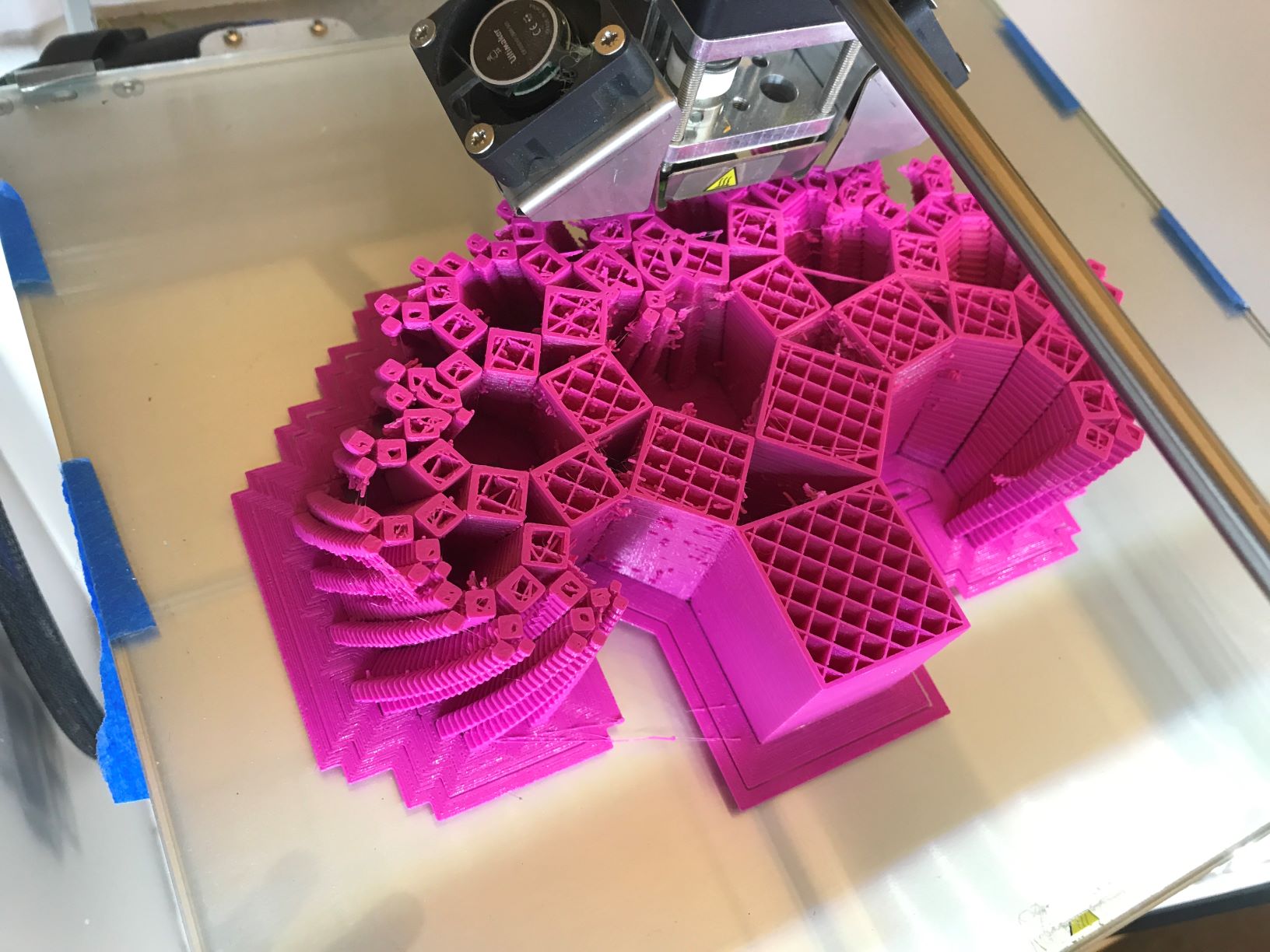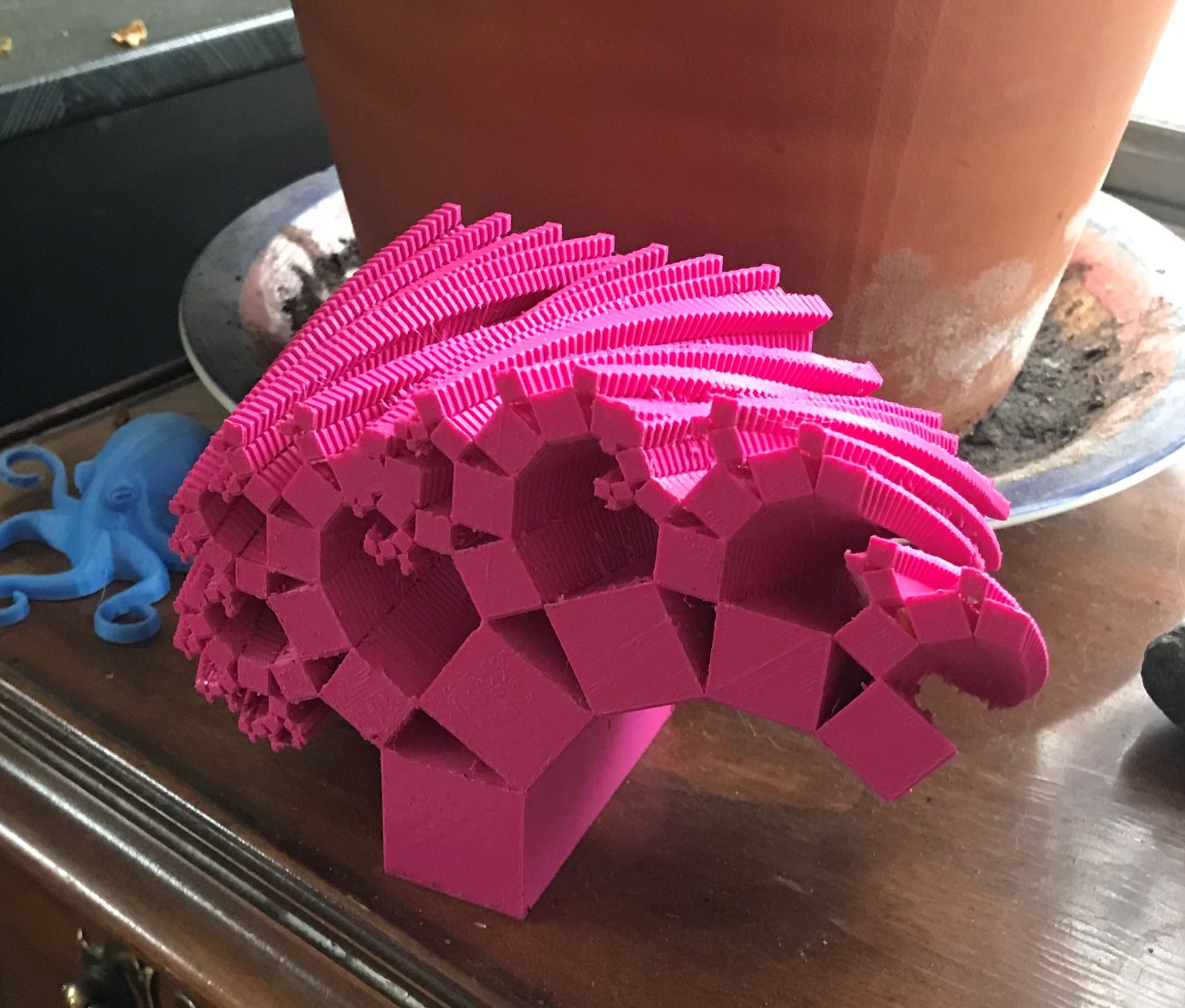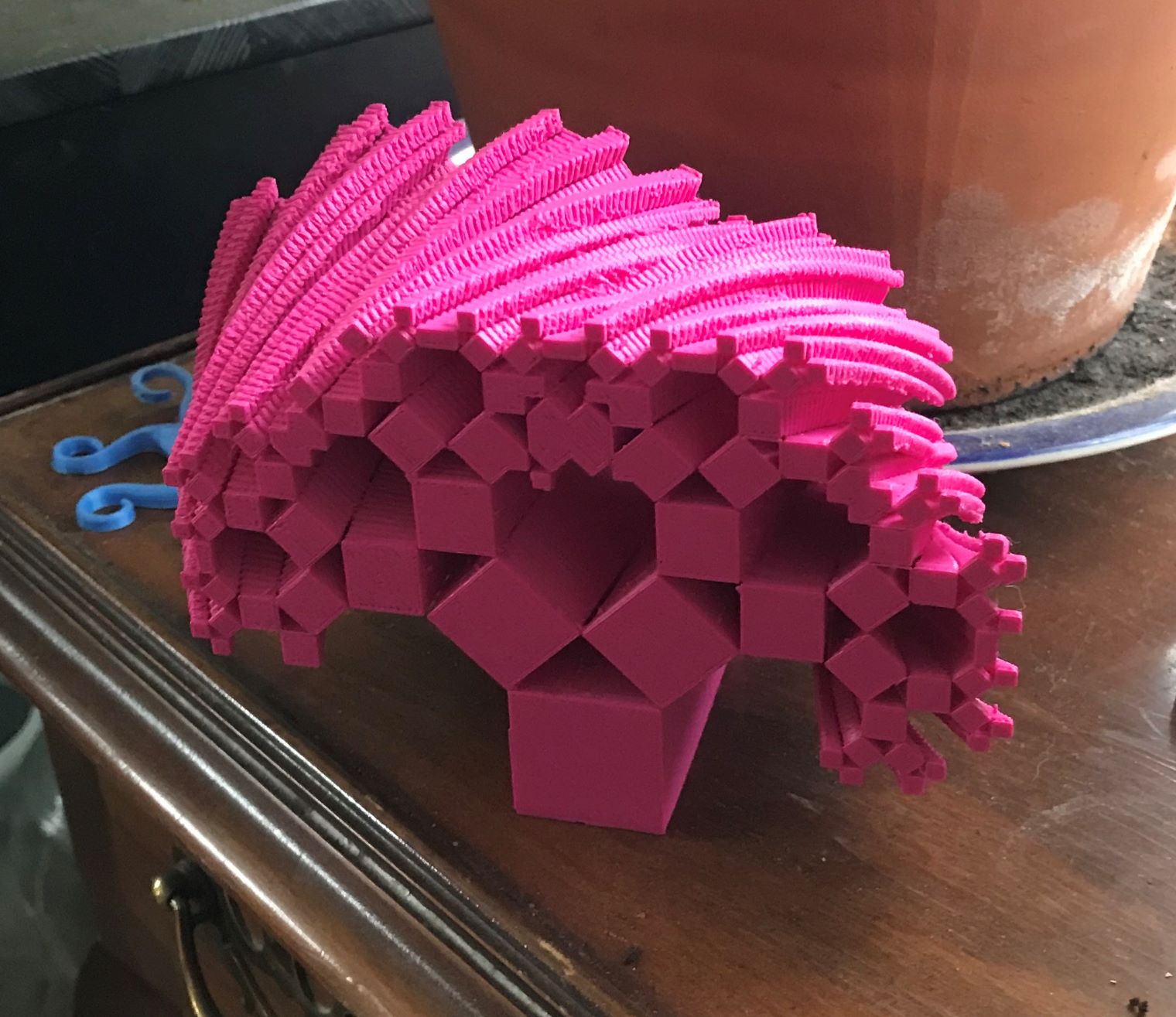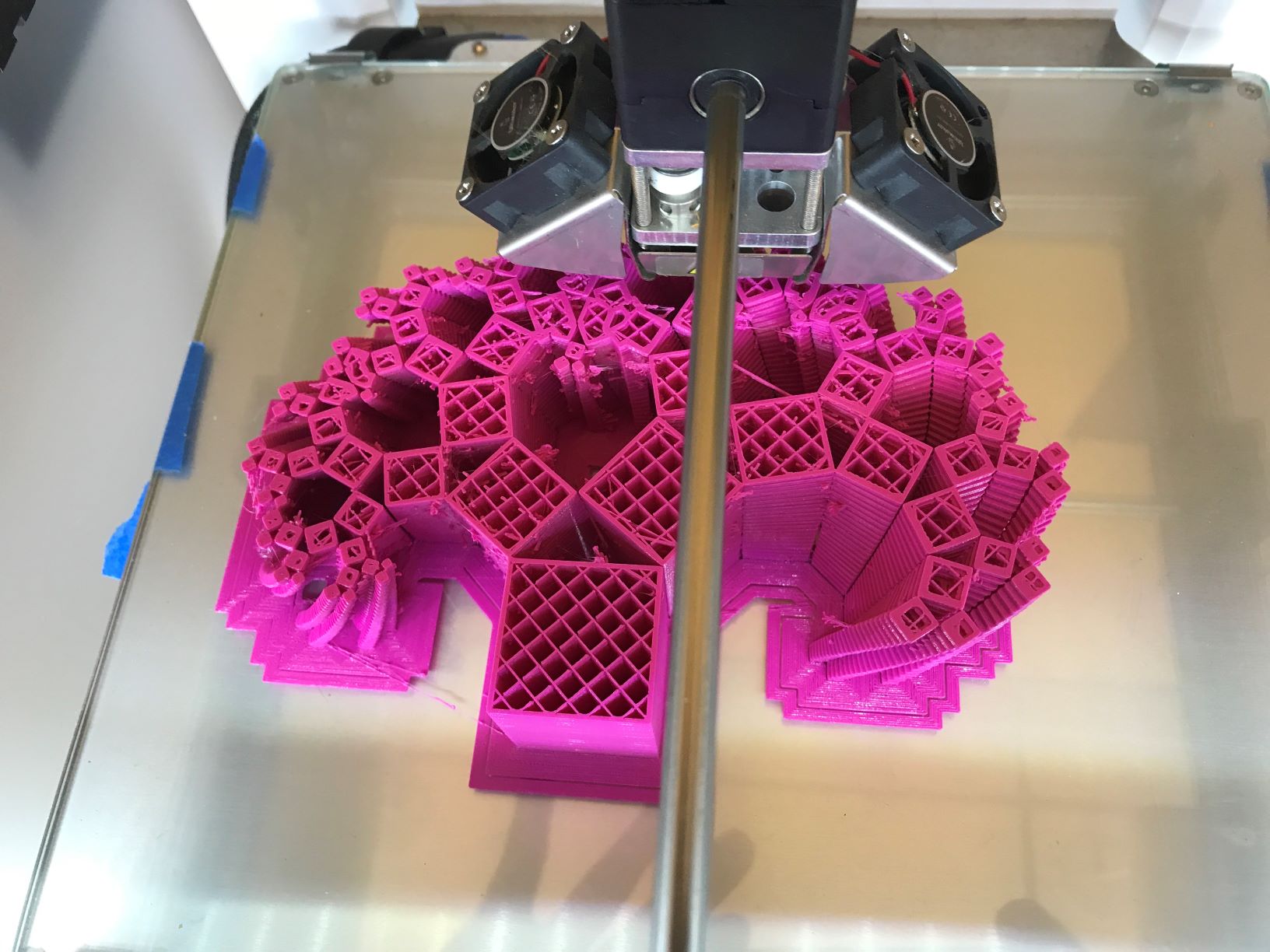3D Printed Deformations Pythagorean Tree Fractals
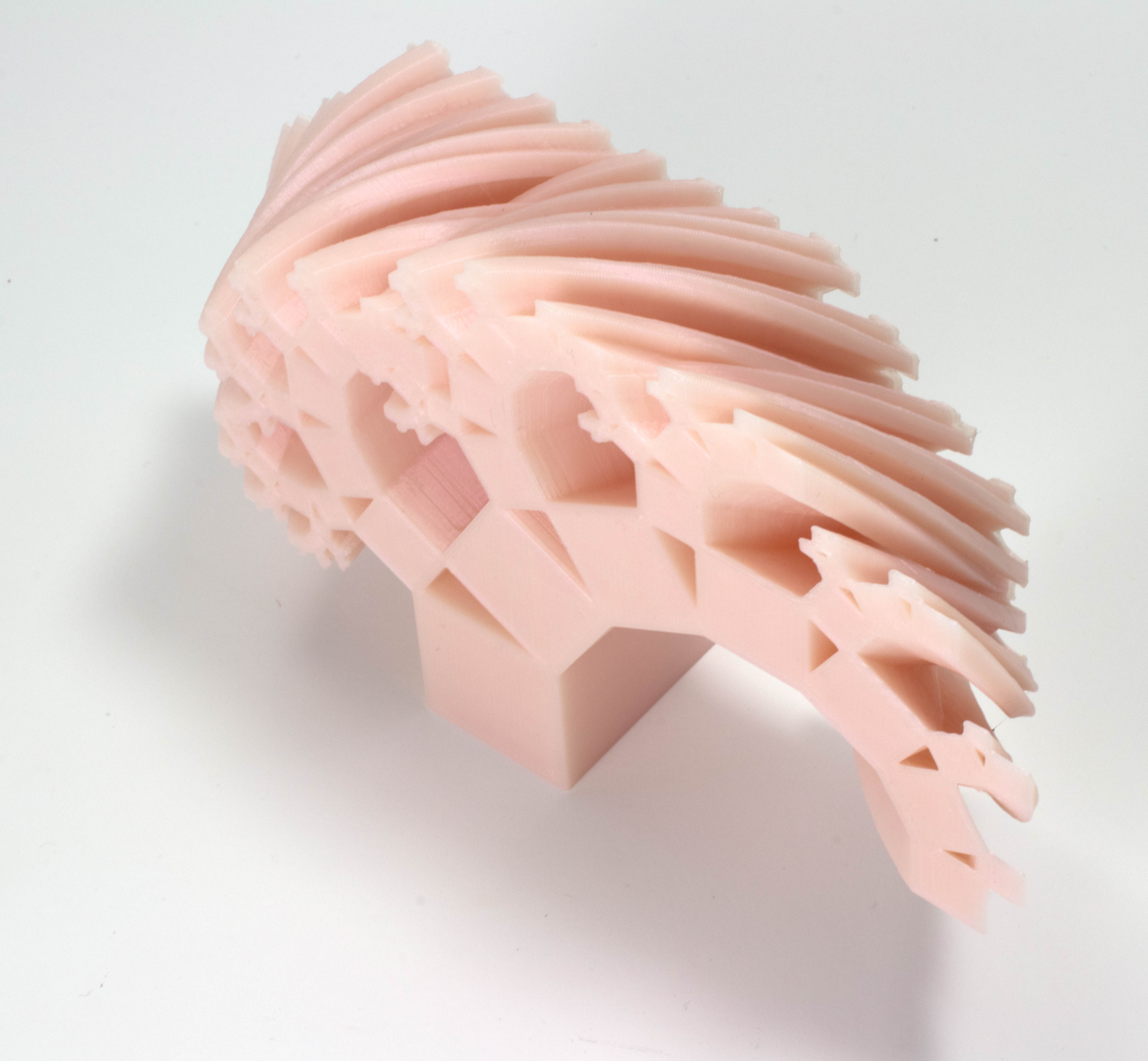
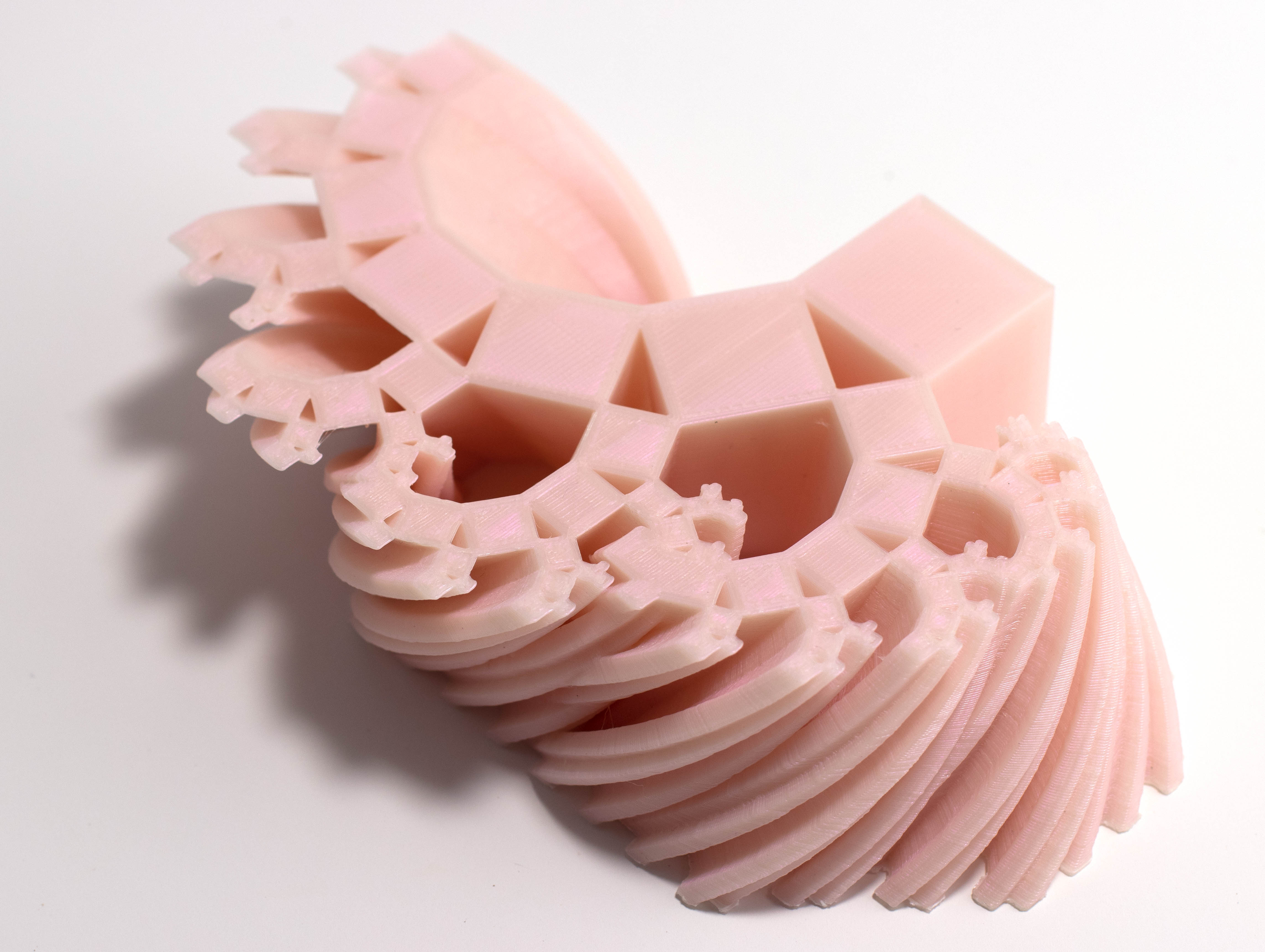
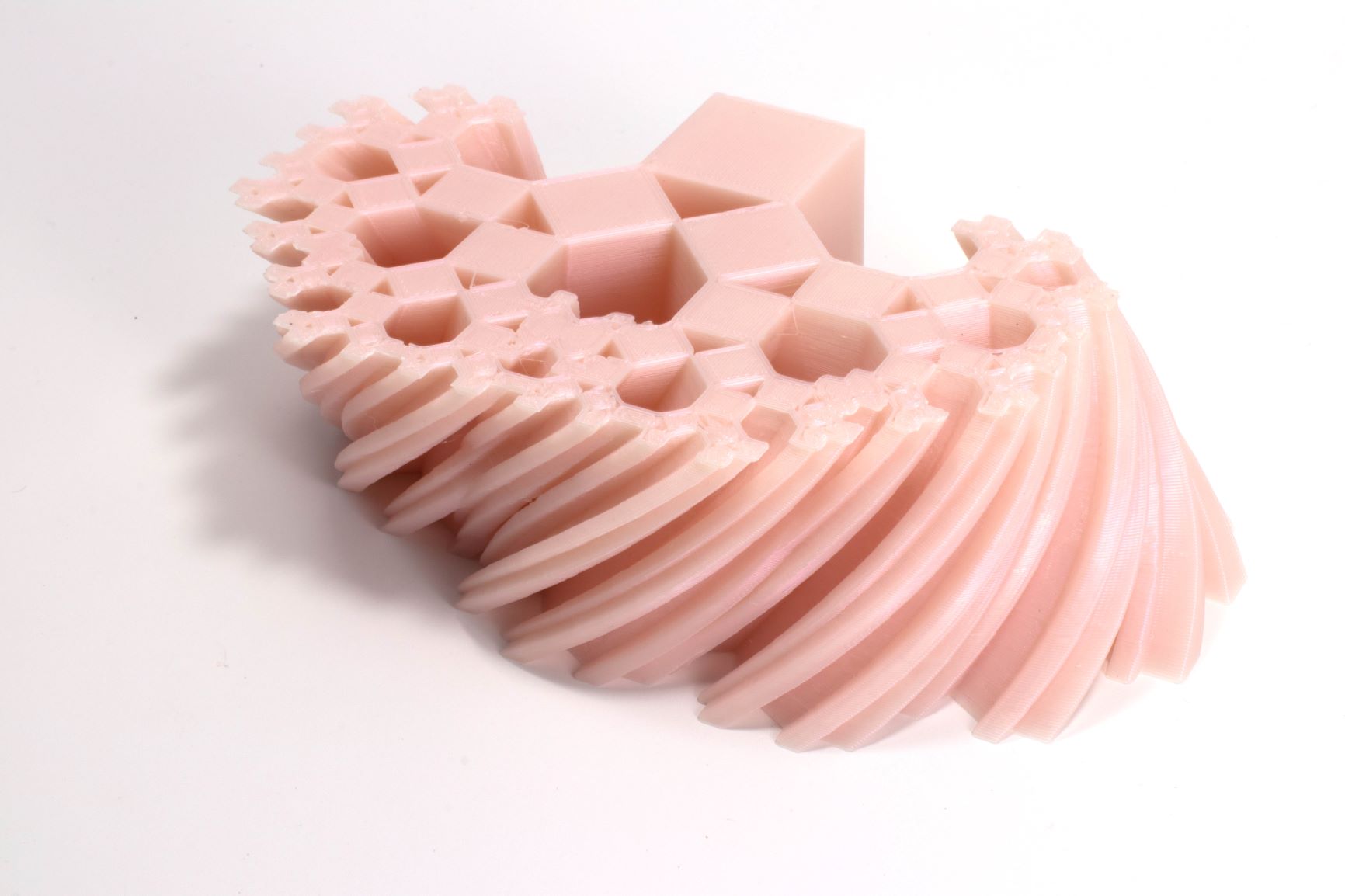
In many different disciplines we study how families of mathematical objects vary or deform according a shift in one parameter. If these objects are all two dimensional, one can vary the parameter over time and display how the object changes as an animation. With a 3d printer we can replace the time dimension with the z-axis, stacking each successively deformed layer on the last. This allows us to hold the entire parametrized family of objects in our hands, giving an entire new dimension to the deformation (literally!). I like to call these 'static animations.'
Another experiment with static animation was studying the deformation of Julia set fractals. These two peices appear side by side in the AMS book Illustrating Mathematics edited by Diana Davis.
The Pythagorean tree fractal is constructed by putting a attaching the long edge of a right triangle to the side of a square, then attaching squares to the legs of the right triangle, and repeating ad infinitum.
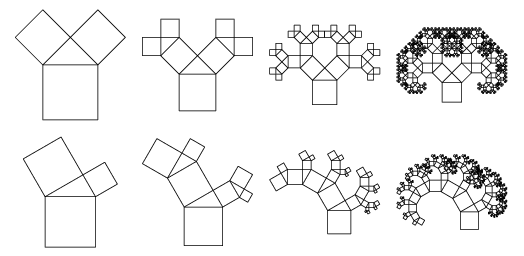 image credit: Wolfram Math World.
image credit: Wolfram Math World.
A right triangle (up to scaling) is determined by one acute angle, and a small shift in that angle corresponds to a small change in the triangle, but the movement reverberates more and more as you progress deeper into the fractal. In the static animation, I vary the angle from 45 to 60 degrees slowly over the course of more than 300 layers.
Here are a few pictures of a first draft of the model, as well as some images of the print.
